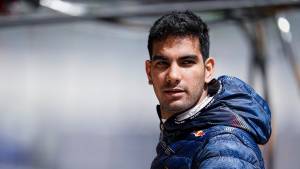On Jules Bianchi, the Japanese Grand Prix and our superheroes

We see them, our superheroes clad in leathers or overalls, as one cohesive unit, bound to their machines. We watch aerial views of MotoGP coverage that show them in this graceful ballet from corner to corner, nearly horizontal at one apex before standing upright to get to the next. We watch as Formula 1 cars come straight towards us on flatscreen televisions, before braking into a corner, one single sharp piece of machinery. We watch rally cars yump through the air, no driver in sight, just a flying piece of metal. That helmet we see leaning from side to side within the cockpit, or crouched close to the motorcycle tank, merges with the machine. We forget that while it's engines that give these machines motive power, there's still a being made of flesh and blood telling the machine what to do. And on the rare occasion that motorsport does give us a reminder that there is indeed a distinction, it does so in a manner that is altogether unpleasant.
At the 2014 Japanese Grand Prix, the rain came down in a torrential and rather unforgiving sheet. The track got far too wet and slippery for racing to be safe, which brought the red flags out, halting the race for the first time, something that was cautious and wise. The second time the red flags came out at Suzuka, it was too late. The telecast we were watching on TV didn't show us what happened. All we saw was a crane at Turn 7 clearing away Adrian Sutil's crashed Sauber, as Sutil looked on from the side. Then there was the medical car that arrived at that very spot, and it obviously wasn't for Sutil. Jules Bianchi's Marussia was out of sight by that time, the Frenchman lying unconscious within the crashed wreckage of his car, having slid across the track and into the recovery vehicle. Far away from the crash site, the grim faces of the three drivers on the podium said it all. It was all very well to win a race, but to win one that was truncated because it was far too unsafe for racing to continue, and to win one as a fellow racer was being rushed to the hospital for surgery, wasn't really something they were likely to celebrate by spraying the contents of the bottles of Mumm's.
Crib. As motorsport fans, we all do it at some stage or the other. At the start of the 2014 season there were people complaining about the fact that Formula 1 cars didn't sound as rousing as they once used to. The general gripe most people appear to have about the sport is that it has turned processional over the years. Each generation of Formula 1 fans will quickly look back at a period in motor racing that they liked best and rattle off names and incidents. "You'll never see anything like the move Hakkinen made on Schumacher at Spa in 1998," one will say. While the other will quickly wind back a decade earlier and cite the famous battles between Senna and Prost as a time when Formula 1 truly was gritty and terrifying in equal measure. Still more believe that the sport has become far too easy - after all, if a sixteen year old driver can be signed on to drive in Formula 1, that's not saying very much about the highest echelon of motor racing, is it?
Well, I can't be bothered about the noise. And I can't deny that the sport hasn't always had as much overtaking as generations gone by have been treated to. What I refuse to agree with, though, is that the sport is easy. To drive a Formula 1 car on the limit at speeds of over 300kmph, to control and adjust the various settings that you're allowed to play with, while tackling a corner, and keeping an eye out to ensure that the driver behind you who has been catching you rather rapidly, doesn't actually leapfrog you and take that podium away from you, that requires supreme abilities - both mental and physical. The chances are that you, unless you're a distant descendent of Tazio Nuvolari or Bernd Rosemeyer, can't do it. No. You can't even come close and there's no pretending otherwise.
What I will agree has changed however, is the human connect that the sport once had. And it's been a rather drastic change over the past decade or so. Ten years ago we knew the distinct personalities of the drivers at the head of the order, like Michael Schumacher, Mika Hakkinen and Eddie Irvine. We had a pretty good idea of the character that was Allan McNish or Mika Salo or Olivier Panis, even if they weren't podium regulars. And we were well aware of the fact that if someone crossed paths with Juan Pablo Montoya, the Colombian would have plenty to say about it the next day. Now, we don't really see very much of that, do we? It's press releases, i's carefully dotted and t's carefully crossed, that tell us what the PR officers believe we must hear, while the drivers are isolated and cautious of what they can say to people. Fans get to see a grid of helmeted drivers on track. And three drivers who eventually are on the podium. It's sad, but I'm willing to bet that a lot of people couldn't at once remember what young Bianchi looked like.
As Jules lies recovering in the hospital, while we're all hoping and praying for the best, I have two small things to say. The first is that we need to remember that what they write on the back of every motorsport ticket - it's really true. Motorsport is dangerous. It's a terrifying sport that we persist in loving despite its many dangers. And it's time we stopped measuring its thrill and danger in terms of the lives it's claimed, but instead measure it in terms of the near misses we've had, and the lives we've not seen lost. It's also time to acknowledge that distinct separation between man and machine and to doff our hats to our helmeted, leather-clad, overalled superheroes. The second is that the FIA needs to remember , once again, that to truly follow a sport, you need heroes and these heroes must have faces and voices that are their own. And that we oughtn't be reminded of their humanity only when it ties in with mortality.














